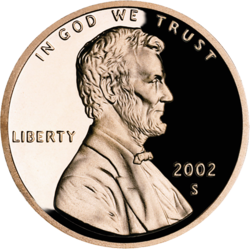This article needs additional citations for verification .(October 2015) |
| Part of a series on |
| Numismatics the study of currency |
|---|
 |
This glossary of numismatics is a list of definitions of terms and concepts relevant to numismatics and coin collecting, as well as sub-fields and related disciplines, with concise explanations for the beginner or professional.
Contents
Numismatics (Ancient Greek : νομισματική, meaning 'monetary') is the scientific study of money and its history in all its varied forms. While numismatists are often characterized as studying coins, the discipline also includes the study of other types of money, such as banknotes, stock certificates, medals, medallions, and tokens.
Sub-fields and related fields of numismatics include:
- Exonumia, the study of coin-like objects such as token coins and medals, and other items used in place of legal currency or for commemoration.
- Notaphily, the study of paper money or banknotes.
- Philately, the study of postage stamps.
- Scripophily, the study and collection of company share certificates and bonds.



